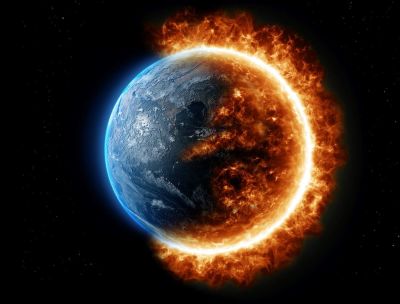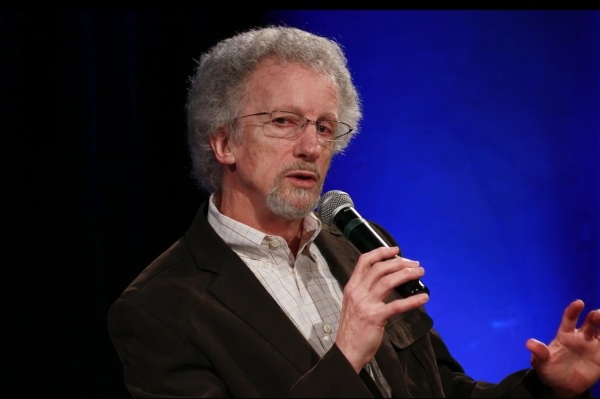Revelation 14: The sickle of judgment and the grapes of wrath

In the book, Meet Yourself in the Psalms, author Warren Wiersbe talks about a town in America’s era of early development where a horse bolted and ran away with a wagon that had a little boy in it. A young man who saw the child in danger, risked his life to catch the horse and stop the wagon.
The child whom he rescued grew up to become a lawless man, and one day he stood before the bar of justice to be sentenced for a serious crime. The outlaw recognized the judge as the same man, who many years prior, had saved his life in the wagon. So, he pled for mercy from the judge based on that experience.
But the words from the bench silenced his plea, “Young man, then I was your Savior but today I am your judge, and I must sentence you to be hanged.”
Revelation chapter 14 warns that one day Jesus will return to say to those who have been rebellious sinners – spiritual outlaws: “During a long, long period of grace, I was the Savior, and I would have forgiven you. I beckoned you to receive my pardon over and again. But today, I am your Judge. Depart from me, you are cursed and sentenced to everlasting fire.”
Consider these solemn words of Scripture from Revelation 14:
“Then I saw a white cloud, and seated on the cloud was someone like the Son of Man. He had a gold crown on his head and a sharp sickle in his hand.
“Then another angel came from the Temple and shouted to the one sitting on the cloud, ‘Swing the sickle, for the time of harvest has come; the crop on earth is ripe.’ So the one sitting on the cloud swung his sickle over the earth, and the whole earth was harvested.
“After that, another angel came from the Temple in heaven, and he also had a sharp sickle. Then another angel, who had the power to destroy with fire, came from the altar. He shouted to the angel with the sharp sickle, ‘Swing your sickle now to gather the clusters of grapes from the vines of the earth, for they are ripe for judgment.’ So the angel swung his sickle over the earth and loaded the grapes into the great winepress of God’s wrath. The grapes were trampled in the winepress outside the city, and blood flowed from the winepress in a stream about 180 miles long and as high as a horse’s bridle” (Revelation 14:14-20).
Here is depicted one who sits on a cloud with a sharp sickle, and an angel comes from the Temple and instructs the one on the white cloud and with the sickle to reap the earth because the harvest is ripe.
There is considerable debate among theologians about who the person on the white cloud is, with some saying it is Christ, the Lord, while others suggest it is an angel. The argument for it being Christ is primarily based on the use of the term “Son of Man,” that he wears a golden crown, and he is surrounded by the white cloud of the Shekinah glory. Nonetheless, there are objections to this particular interpretation, seeing that the angel gives instructions to the one on the cloud. It hardly seems likely an angel would give directives to the King of kings and the Lord of lords. Still, others counter that the angel coming from the Temple is not exactly giving an order, but conveying the will of the Father whose presence he just left from within the Temple.
Those who contend that the one on the white cloud is an angel say that he is not the Lord, but a mighty angel who bears the likeness of Christ’s glory, meaning that he is an angel very near and dear to the Lord, and is appointed to carry out the Lord’s judgment on the unredeemed – the people of the earth – the harvest of the land. Admittedly, there is no consensus on the issue.
What is abundantly clear about the text, however, something that essentially all serious interpreters agree upon, is that the passage anticipates the final judgment of the world. It may be somewhat unclear as to who is on the cloud, but it is evident that the sickle is a symbol of God’s final judgment.
The sickle has been used as a representation of judgment throughout history in various cultures and contexts.
The sickle’s primary association is with agriculture and the harvest. It is a tool used for cutting and harvesting crops, particularly grains like wheat. Because of its strong association with reaping, it became connected symbolically with judgment in many societies.
For instance, in Mesopotamia, the Sumerian god Nergal, a god of war, death, and destruction, was portrayed holding a sickle as a symbol of his power and ability to judge the fate of humans. The belief was the sickle could separate the righteous from the unrighteous.
Ancient Egyptians also used the sickle in this manner. In their mythology, the god Osiris was often shown with a crook and flail. The crook denoted his role as a divine ruler, while the flail or whip represented judgment and punishment. The flail resembled a sickle in its shape, further emphasizing its association with judgment.
Even in Western cultures, there is the image of the Grim Reaper. He is a cloaked figure carrying a scythe or sickle. He is the personification of death and his scythe is equal to the concept of judgment and the reaping of souls.
It is more than a coincidence that throughout human history, most cultures and civilizations have held a belief in a judgment or evaluation taking place at the end of the world or the end of life. This concept, especially that of a post-mortem judgment, carries with it the idea that the actions of nations and personal deeds will inevitably be weighed in the balance and determine a final destination. While specific beliefs and details may vary across cultures, the overarching notion of some form of judgment is a recurring theme.
In a magnificent sermon titled, "The Hope of Judgment," the former president of Moody Bible Institute, George Sweeting has argued:
“Many thoughtful people are convinced that the modern world is very much like the leaning tower [of Pisa]. Civilization, they believe is tipping more and more under the weight of moral decline, decadence, and world problems. And, indeed the evidence seems to support such a conclusion.
“The heart of the problem in our world is the problem of sin in the human heart. And man can rise above his sin through the Lord Jesus. He has died to redeem us from our sins. But we must trust him in order to be saved. That is the gospel. It is truth. And a day is coming when every man will be judged on his response to the truth.
“There are those who ask how an all-powerful and loving God could allow so much suffering and pain and heartache. They suggest that if there really was a righteous, omnipotent God, he would be morally obligated to stamp out such evil.
“There is a God, and he is righteous and omnipotent; a day of reckoning is coming. On that day God will wipe out all evil forever. He delays that judgment now because of his love. He is dealing with mankind in grace and mercy in this age, bringing men to faith in Christ so that they might be redeemed from their sins.
“The knowledge of a day of judgment coming is frightening to some, but it does not have to be. The promise of judgment is God’s promise that this world will not have to go through misery and pain and suffering indefinitely. His judgment has already begun, and he will complete what he has started.
“Some sins are judged immediately. Others are judged later. But the great and final judgment is left to come.
“Paul wrote to the Galatians about the certainty of judgment. ‘Don’t be misled—you cannot mock the justice of God. You will always harvest what you plant. Those who live only to satisfy their own sinful nature will harvest decay and death from that sinful nature. But those who live to please the Spirit will harvest everlasting life from the Spirit.’ (Galatians 6:7-8).
“Do you see it? Sin and judgment are like sowing and reaping. The sin itself determines the judgment, just like the sin that is sown determines what is harvested. Sowing to the flesh, Paul says, is asking for a harvest of corruption. God may delay the judgment, but he will not be mocked. Judgment is coming for sure.”
Additionally, there is a discussion about whether Revelation chapter 14 verses 15 through 20 refer to the gathering of the faithful or the judgment of the wicked. Some argue for both interpretations, while others suggest it is only about harvesting the wicked.
Consider first the view that contends this passage describes only a judgment of the unsaved, the unrighteous.
Advocates of this view argue that the imagery of harvesting and the winepress is symbolic of God’s judgment upon the unrepentant and evil. They contend that the mention of the “Son of Man” must be Jesus and the sickle he possesses is not indicative of a separate judgment for the righteous, but rather a proclamation of Christ’s authority over all judgment.
Larry R. Heyler and Richard Wagner in their book, The Book of Revelation for Dummies, discuss this view, saying:
“John apparently borrows the imagery for both the wheat and the grape harvestings from the Old Testament prophet Joel. In Joel 3:13, in a context of impending divine judgment on the nations, the prophet says, ‘Put in the sickle, for the harvest is ripe. Go in, tread, for the wine press is full. The vats overflow, for their wickedness is great.’ The last line many scholars observe casts quite a different perspective on both the first and second harvestings. From this one perspective, both seem to represent divine judgment. John’s vintage scene is introduced by describing an angel who performs the action: ‘And he too had a sharp sickle.’ (Revelation 14:17). This seems to link closely the two sickles, and clearly, the second conveys a negative image. Therefore, many commentators conclude that both harvestings, in this context, depict God’s End Time Judgment on an unbelieving world.”
John Walvoord, a long-time recognized authority on eschatology, in his book, The Revelation of Jesus Christ, notes that “the passage itself does not tell us what the first harvest is. There is no distinct event in the sequence of prophecies which clearly presents a harvest of saints, and it is probably preferable to consider the first harvest as the judgments in general which characterize the period and the second harvest as the final climatic one.”
Advocates of two separate judgments, one for the righteous and another for the wicked, describe Jesus as the “Son of Man” sitting on the white cloud, wearing a golden crown, and holding a sharp sickle. They say what this represents is Jesus coming to gather and reward the faithful, initiating the judgment of the righteous. The idea is that believers are being separated from the wicked before any judgment is executed upon the wicked.
In other words, some would say the reaping imagery in the first harvesting is an ingathering or rapture of the church. This view seems to be strengthened by the fact the person sitting on the white cloud who does the reaping is like “the Son of Man,” which many argue unquestionably identifies the figure as Christ, the Lord.
The reason why so many Christians believe the Church will be raptured before the Tribulation – that period of God’s wrath on earth – is because the godly have not been appointed to God’s wrath.
In the subsequent verses (15-20), an angel is said to be coming out of the Temple with a different sickle, and an angel commands the angel with the sickle to gather the clusters of grapes representing the earth’s wicked, who are ripe for judgment and are to be thrown into the great winepress of God’s wrath. This is a second judgment.
The renowned Scottish Bible commentator William Barclay in his book on The Revelation of John, summarizes the view this way:
“There are two difficult things in this passage. First, there is the fact that the one like the son of man reaps and also an angel reaps. We may regard one like the son of man, the risen and victorious Lord, reaping the harvest of his own people, while the angel with the sharp sickle reaps the harvest of those destined for judgment.”
Finally, the second harvest is without any doubt about the judgment of those who have set their hearts against the Lord and his Christ. An angel comes out from what is probably the altar of incense because the imprecatory prayers of God’s people are about to be answered. The text is an expression of God’s terrible wrath against those who have oppressed and persecuted the followers of Christ.
What is described is the language of warfare, which is why many Biblical scholars believe the second harvest is a reference to the battle of Armageddon.
According to various Biblical prophecies, Armageddon is a future apocalyptic event where the nations of the world gather to fight against God. It represents the war that will certainly end all wars. Although the specifics of this event remain veiled, it signifies the ultimate triumph of God’s righteousness and his judgment upon evil. Ultimately, it serves as a reminder of the certainty of God’s final victory and the fulfillment of his plan for a world of peace and prosperity. Evil and everyone who defies the Lord and his purposes shall be crushed beneath his feet.
John seems to borrow language from the prophet Isaiah in describing this future moment in history:
“Who is this who comes from Edom, from the city of Bozrah, with his clothing stained red? Who is this in royal robes, marching in his great strength? ‘It is I, the LORD, announcing your salvation! It is I, the LORD, who has the power to save!’ Why are your clothes so red, as if you have been treading out grapes? ‘I have been treading the winepress alone; no one was there to help me. In my anger, I have trampled my enemies as if they were grapes. In my fury, I have trampled my foes. Their blood has stained my clothes. For the time has come for me to avenge my people, to ransom them from their oppressors. I was amazed to see that no one intervened to help the oppressed. So, I myself stepped in to save them with my strong arm, and my wrath sustained me. I crushed the nations in my anger and made them stagger and fall to the ground, spilling their blood upon the earth.’” (Isaiah 63:1-6).
Daymond R. Duck and Larry Richards in The Book of Revelation: The Smart Guide to the Bible, add:
“Since the blood will rise as high as the horses’ bridles for approximately 200 miles, we know that millions will die. Before it happens though, God will preach the Gospel through the 144,000 Jews, the Two Witnesses, and his angel (the first angel of chapter 14) to warn those who follow the Antichrist. He will give the world many chances to repent before he destroys it.”
Someone said, “Procrastination is the art of wasting opportunities disguised as free time. Act now, for tomorrow may arrive with regret and faded dreams.”
Genesis 6: 3 reads, “The Lord said, ‘My Spirit will not contend with humans forever…’” The Lord’s offer of grace and mercy is not indefinite. Judgment is as certain as the rising and setting of the sun.
The Battle Hymn of the Republic, which derives its message from passages like the one in Revelation 14:15-20, in one of its stanzas admonishes:
“He has sounded forth the trumpet that shall never call retreat; He is sifting out the hearts of men before his judgment seat; Oh, be swift, my soul, to answer him! Be jubilant, my feet! Our God is marching on.”
Rev. Mark H. Creech is Executive Director of the Christian Action League of North Carolina, Inc. He was a pastor for twenty years before taking this position, having served five different Southern Baptist churches in North Carolina and one Independent Baptist in upstate New York.




















